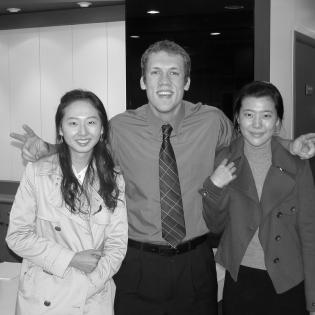Health and Nutrition
Learners review healthy eating habits and share their learning to promote a healthier community.
The learner will:
- analyze healthy eating habits proposed by the government.
- advocate for healthy eating through a poster or social media post.
- health: the general condition of the mind and body
- obesity: a medical condition where fat has reached a point of adverse effect on health; connected to poor diet
- nutrition: process by which we use food to help us grow and maintain healthy bodies and minds
- diet: food and drink consumed for survival
- whole grain: food made from the entire grain seed
- refined grain: food made from only one of the three parts of a grain seed
- processed food: food changed from its natural state for convenience or safety
- portion size: the amount of food you should eat at one time
- USDA. "Choose My Plate" Dietary guidelines by food group. https://www.myplate.gov/eat-healthy/what-is-myplate
Instructions
Anticipatory Set:
Display the handout below: Good Health and Nutrition. Read and discuss the facts together.
Ask the learners to name some healthy habits they have related to eating, rest, mental health, being social, exercise, or another aspect of good health. Habits can be built if someone is determined and they start small. For example, if they eat junk food at specific times (a habit), they can replace cookies with fruit at one time each day until it becomes a habit. Allow a few minutes of quiet reflection on personal habits they would like to continue or change.
Give learners copies of the handout below Got Health? to spark their curiosity and discussion. Allow time to do research in pairs or small groups on the question: What should young people eat each day to be healthy for life?
After 20-30 minutes of research, bring the group together to share what they have learned. Discuss the food groups and describe a day of balanced nutrition. Encourage them to tell about the healthy foods they like.
Discuss the challenges and barriers to eating well and having a healthy lifestyle. Invite them to share empathy and ideas for overcoming obstacles as a caring community.
Optional: make a game of answering the questions on the Got Health? handout.
When individuals are healthy, the community is healthy.
- Talk about why and what the government does to promote good health. (The government funds and shares research as well as meals for people who are food insecure.)
- Discuss what nonprofits, businesses, restaurants, stores, and food companies do to promote good health.
- They can also volunteer and take action to help others have access to good nutrition and nutritional information.
Discuss what they can teach others that would be good for the whole community. They may come up with the idea to create posters about healthy foods and habits. Or they may decide to write a letter to the school administration about having healthy snack and lunch choices at school.
Facilitate their service project with materials, connections, and instruction.
Handouts
Philanthropy Framework
-
Strand PHIL.I Definitions of Philanthropy
-
Standard DP 02. Roles of Government, Business, and Philanthropy
-
Benchmark HS.1 Explain why needs are met in different ways by government, business, civil society and family.
-
Benchmark HS.6 Describe how the civil society sector is often the origin of new ideas, projects and innovation and social renewal.
-
-
-
Strand PHIL.II Philanthropy and Civil Society
-
Standard PCS 07. Skills of Civic Engagement
-
Benchmark HS.1 Utilize the persuasive power of written or oral communication as an instrument of change in the community, nation or the world.
-
Benchmark HS.4 Analyze and synthesize information to differentiate fact from opinion based on the investigation of issues related to public policy. Discuss these issues evaluating the effects of individual actions on other people, the rule of law and ethical behavior.
-
-
-
Strand PHIL.IV Volunteering and Service
-
Standard VS 01. Needs Assessment
-
Benchmark HS.1 Identify a need in the school, local community, state, nation, or world.
-
Benchmark HS.2 Research the need in the school, neighborhood, local community, state, nation, or world.
-
-
Standard VS 02. Service and Learning
-
Benchmark HS.1 Select a service project based on interests, abilities, and research.
-
-
